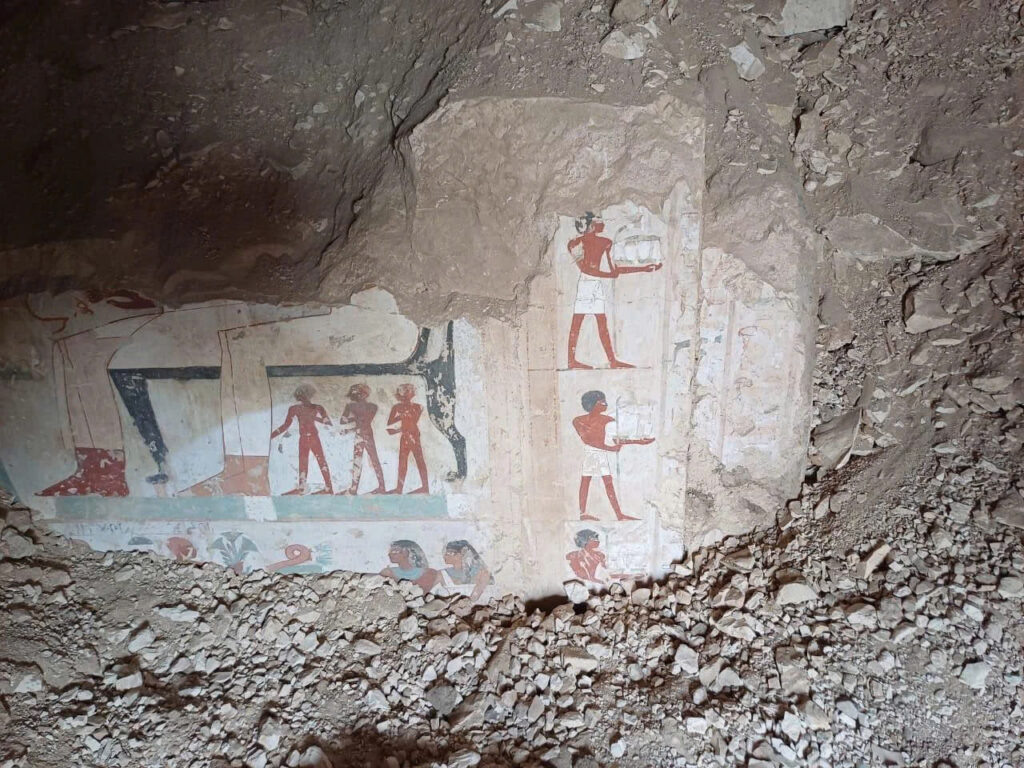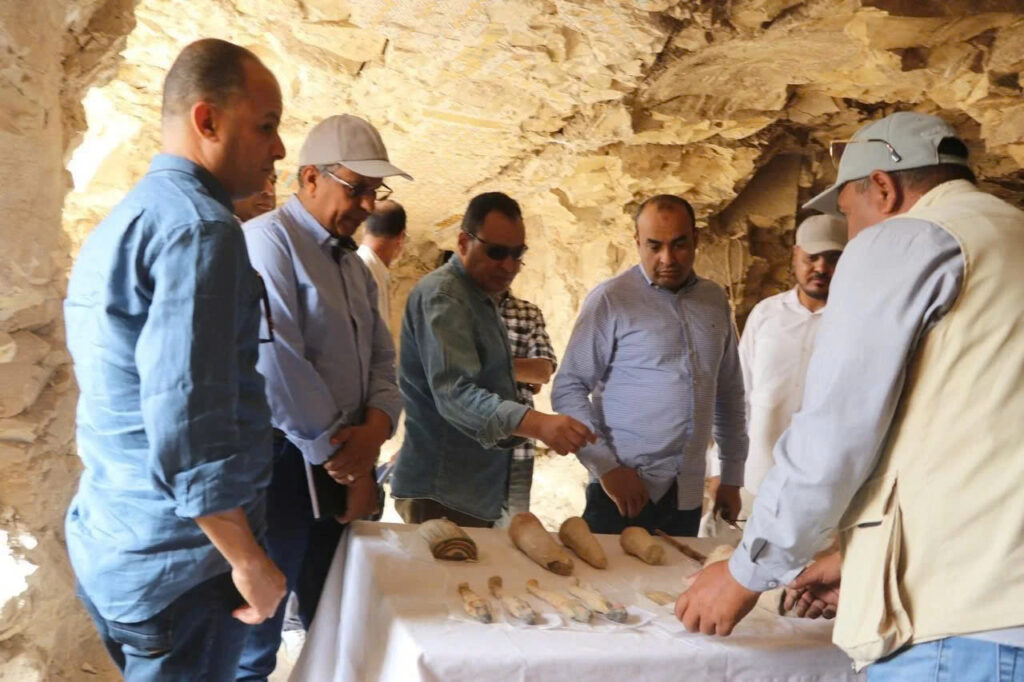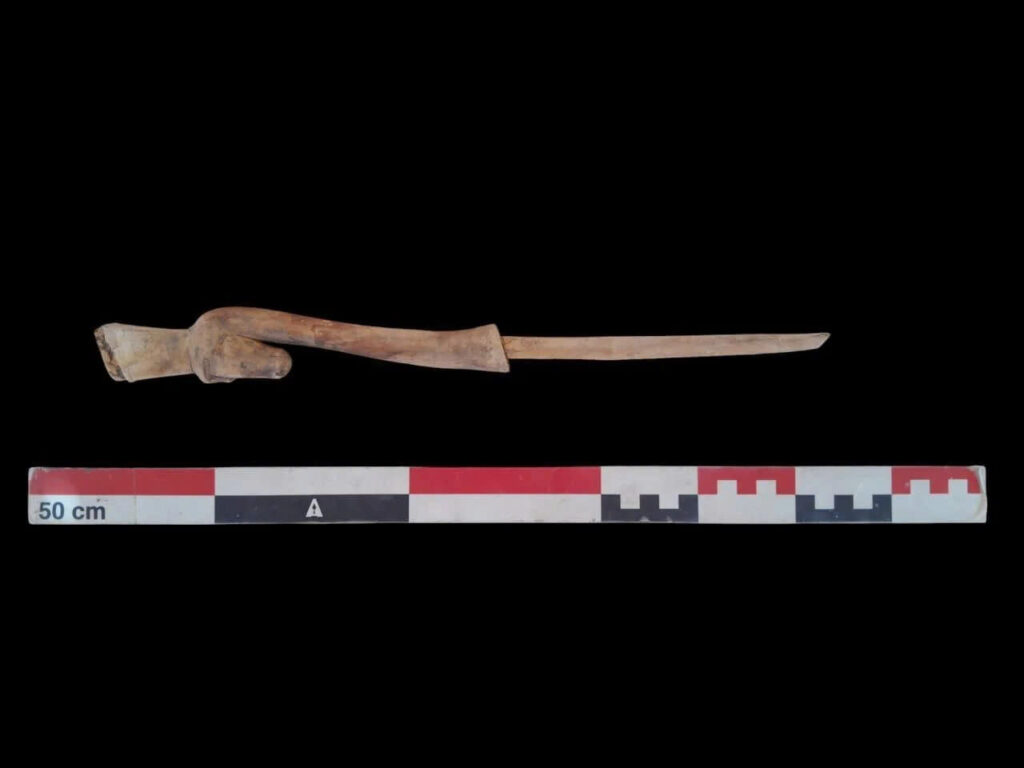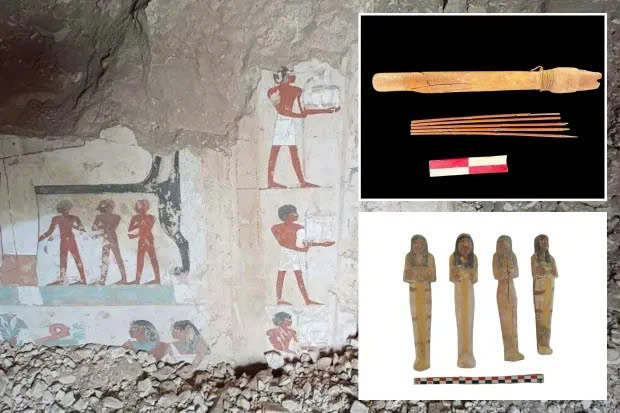In a remarkable archaeological breakthrough, Egyptian researchers have uncovered three extraordinary burial chambers on Luxor’s historic West Bank, shedding new light on the lives of influential figures from Egypt’s glorious New Kingdom era. These tombs, buried for over three thousand years, have emerged from the sands of time to tell their ancient stories.
The Discovery That Rewrites History
The excavation site at Dra Abu el-Naga necropolis, strategically positioned near the legendary Valley of the Kings, has yielded treasures that archaeologists describe as a window into Egypt’s golden age. Dating back to approximately 1550-1070 BCE, these burial chambers belonged to three distinguished men who wielded considerable power during the 18th and 19th Dynasties.
The Ministry of Tourism and Antiquities has identified the tomb owners as Amun-em-Ipet, Baki, and a third individual known simply as “S.” Each held prestigious positions that placed them among ancient Egypt’s administrative and religious elite, their final resting places reflecting their elevated status in society.
Guardians of Sacred Traditions
Amun-em-Ipet: Servant of the Divine

Among the most fascinating discoveries is the tomb of Amun-em-Ipet, a devoted servant of Amun during the Ramesside period (1295-1186 BCE). His burial chamber reveals a man deeply connected to one of Thebes’ most revered deities. The tomb’s architecture features an intimate courtyard leading to a square chamber, where weathered wall paintings still whisper tales of funeral processions and ceremonial feasts.
Despite centuries of deterioration, the surviving artwork depicts scenes from the Beautiful Festival of the Valley, offering invaluable insights into religious practices that once brought the community together in celebration of the afterlife.
Baki and “S”: Masters of Administration
The earlier 18th Dynasty tombs tell equally compelling stories. Baki, responsible for overseeing grain storage facilities, played a crucial role in Egypt’s agricultural prosperity. His elaborate tomb, featuring dual courtyards and multiple chambers, reflects the importance of food security in ancient Egyptian civilization.
The mysterious “S” held an impressive array of titles: temple scribe, mayor of northern oases, and overseer of Amun’s Temple. His tomb, though containing unfinished rooms, speaks to a life of diverse responsibilities spanning religious, administrative, and regional governance.
Archaeological Treasures and Future Revelations
Sacred Companions for Eternity

The excavation has yielded fascinating artifacts, including shabti figurines—miniature servants designed to accompany the deceased into the afterlife. These discoveries provide tangible connections to ancient Egyptian beliefs about death and eternal service.
Video
Egyptian Excellence in Archaeological Leadership
This discovery represents more than just historical significance; it showcases the remarkable expertise of Egyptian archaeological teams. Working independently, local researchers have demonstrated their growing leadership in uncovering their nation’s heritage.
The Journey Continues

Mohamed Ismail Khaled, Secretary-General of the Supreme Council of Antiquities, has outlined plans for comprehensive analysis of the tombs. Detailed cleaning and examination will precede academic publication, with researchers anticipating that inscriptions and burial artifacts will reveal even deeper insights into these remarkable individuals.
Part of Luxor’s Golden Age of Discovery

This find joins an impressive series of recent archaeological breakthroughs in the Luxor region. From the sensational “Lost Golden City” excavated in 2021 to royal tombs connected to King Tutankhamun’s dynasty discovered this year, the area continues to rewrite our understanding of ancient Egyptian civilization.
As excavation work progresses, these three tombs promise to unlock new chapters in the story of Egypt’s New Kingdom period, offering future generations unprecedented glimpses into the lives of those who helped shape one of history’s greatest civilizations.

